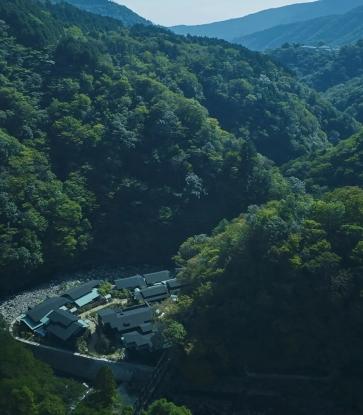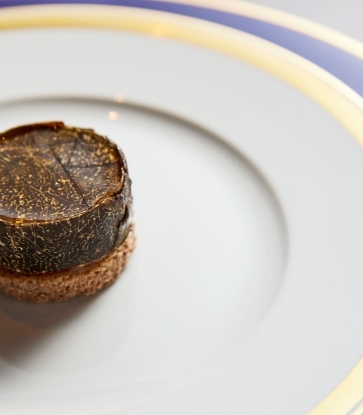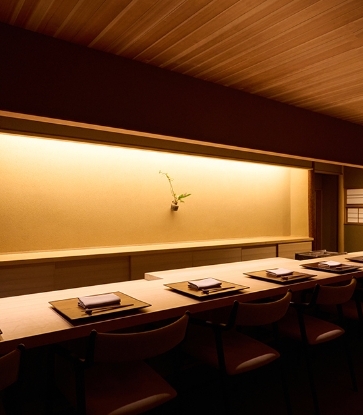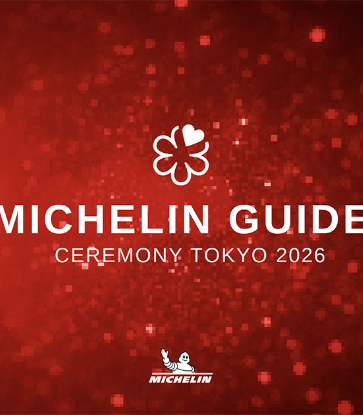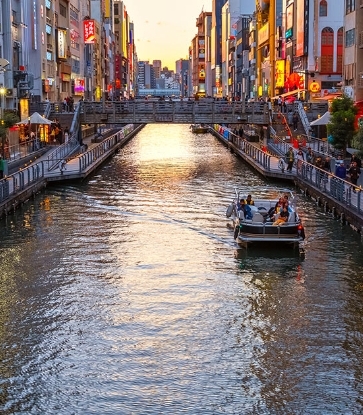At one, ingenious design allows guests to seemingly disappear into the waters above the coral reefs they’ve come to explore. At another, innovative construction creates a myriad of outdoor spaces high and cool above the desert floor. At a third, hotel buildings are indistinguishable from the museum that dots the island setting — and guests sleep in a living gallery.
The MICHELIN Guide Inspectors have selected the five hotels below as nominees for the inaugural MICHELIN Architecture & Design Award. On October 8, The MICHELIN Guide will celebrate the achievements of one, while also announcing the very best hotels in the world for this year: the 2025 MICHELIN Keys.
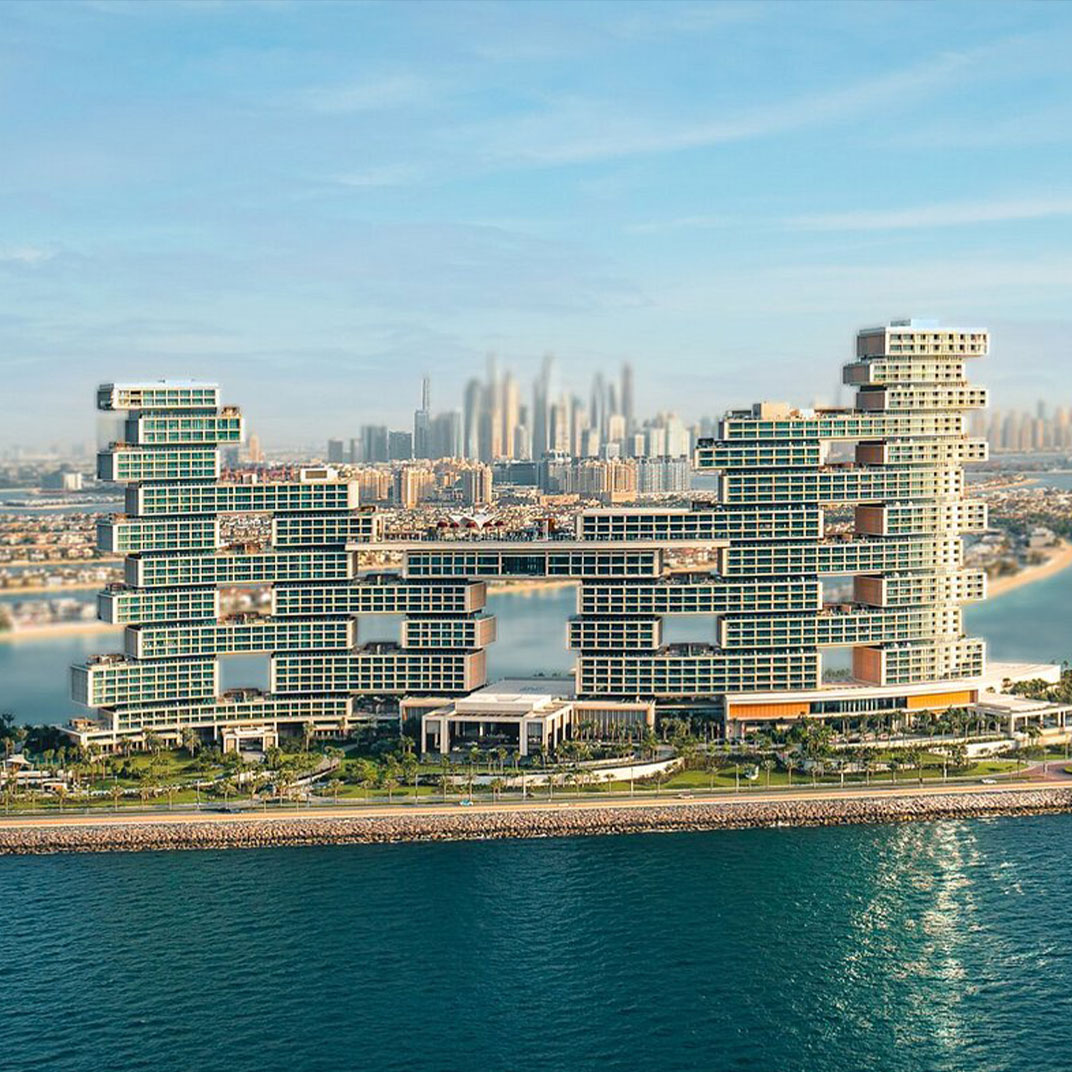
Atlantis The Royal, Dubai
Who stays here: Ultra-luxury travelers seeking spectacle in one of the world's most extravagant destinations.
This 2023 addition to Dubai's constantly evolving skyline is not a challenge to conventional hotel design — and to skyscrapers as a genre — just for the sake of aesthetics. The avant-garde silhouette of Atlantis The Royal consists of six interconnected towers, each composed of terraced, cantilevered blocks with their own spaces and amenities. The constantly interlocking design looks fantastic and futuristic; it also creates a myriad of naturally ventilated, shaded outdoor spaces for hotel guests, the result of which is a building that feels less like a hotel than its own indoor/outdoor, garden-strewn neighborhood.
Guest rooms are referred to fittingly as Skyscapes and Seascapes, and inside, elegant interiors revolve around water features — a nod to the region's history, where the search for water often defined daily life. Across the hotel’s many individual building blocks you'll find 795 guest rooms and suites, 15 restaurants and a dramatic skybridge that connects the building’s upper reaches.
Defining features:
- The 11.5-meter stainless steel lobby sculpture “Droplets,” complemented by private fountains in suites and cascading pools throughout the hotel’s public spaces.
- Geometric patterns, intricate glass windows and immersive light systems that reflect expert craftsmanship.
- Innovative technology, like LED screens that provide ambient visuals behind the hotel’s three aquariums, home to 7,200 marine animals.
- A 90-meter infinity pool on the 22nd floor, offering sweeping views of the Palm and Gulf.
More hotels by architect Kohn Pedersen Fox:
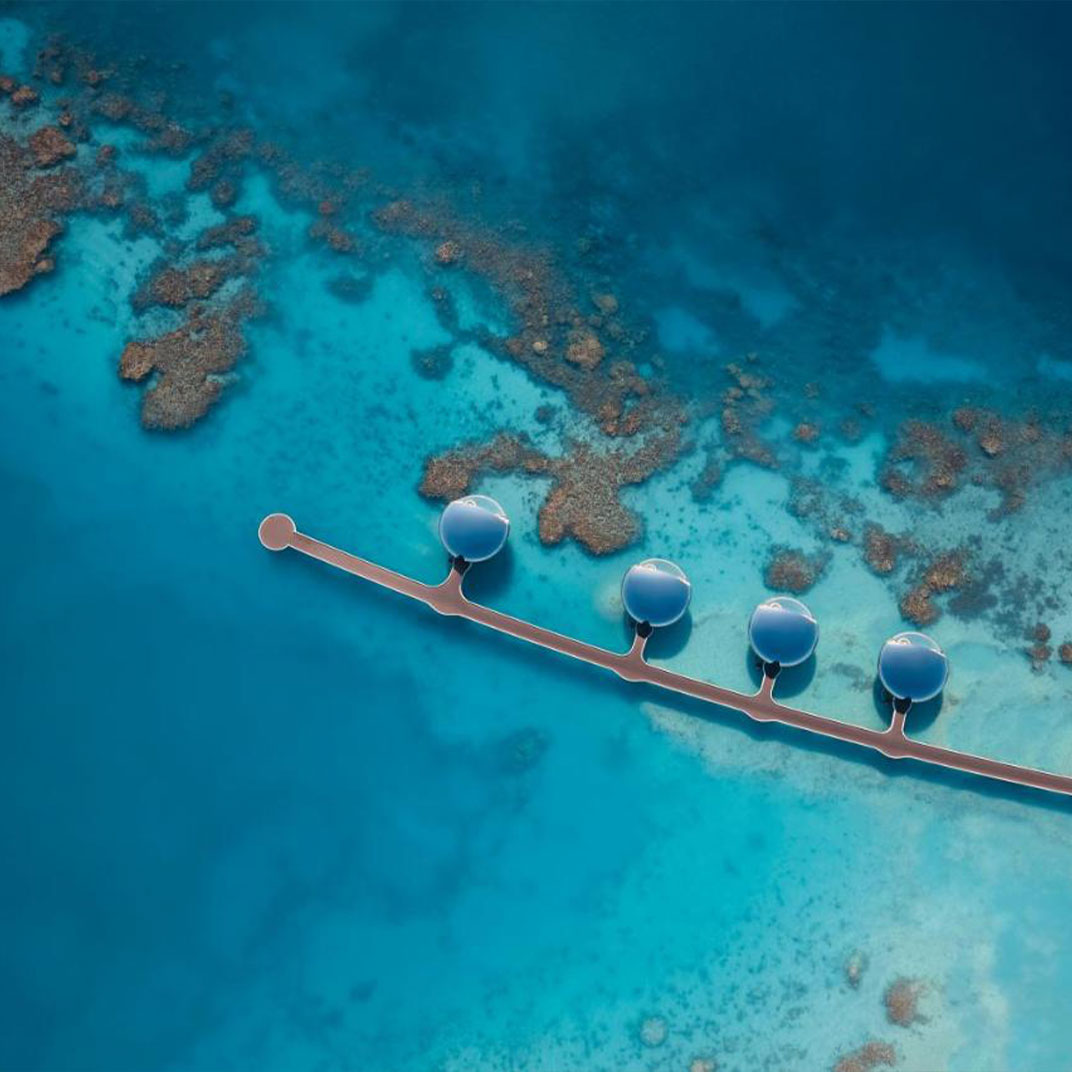
Shebara Resort, Saudi Arabia
Who stays here: Adventurous couples and families who want to break the mold with an intimate, eco-conscious experience above Saudi Arabia’s pristine coral reefs.
Part of the Red Sea Project, an ambitious effort to develop Saudi Arabia’s western coast, Shebara Resort is the country’s answer to the overwater villas of the Maldives. Travelers come to dive and snorkel among vibrant coral reefs, and the resort’s unmistakably radical architecture reflects its mission: celebrating, while preserving, the fragile marine environment. The 73 villas, designed to resemble shimmering pearls, were constructed off-site and transported here nearly complete to minimize disruption. 38 villas sit directly over the water itself, supported by narrow columns meant to disturb as little of the ocean floor as possible. Their stainless-steel panels gleam in the sun and wear the water’s reflection as camouflage.
Completely self-contained, the Dubai-based Killa Design firm intentionally spaced the villas for optimal privacy. And the resort’s advanced technology — its own, massive solar farm, desalination and reverse osmosis plant, and all-electric transportation — earned it a LEED Platinum rating. Inside each “pearl,” sleek interiors feel as light as the villas themselves, outfitted with polished steel and custom furnishings.
Defining features:
- Two styles of villas: overwater and on land, each equipped with amenities that include infinity pools, double daybeds, outdoor showers and sunken lounges.
- Five sea-view dining options, including indoor omakase, a beachside family grill, a homemade pasta lab and an adults-only pool bar.
- An indoor/outdoor spa with hammam, a yoga pavilion, tennis and padel courts and multiple outdoor pools.
- Guided snorkel and diving tours of the extensive coral reef network, including nighttime bioluminescent experiences.
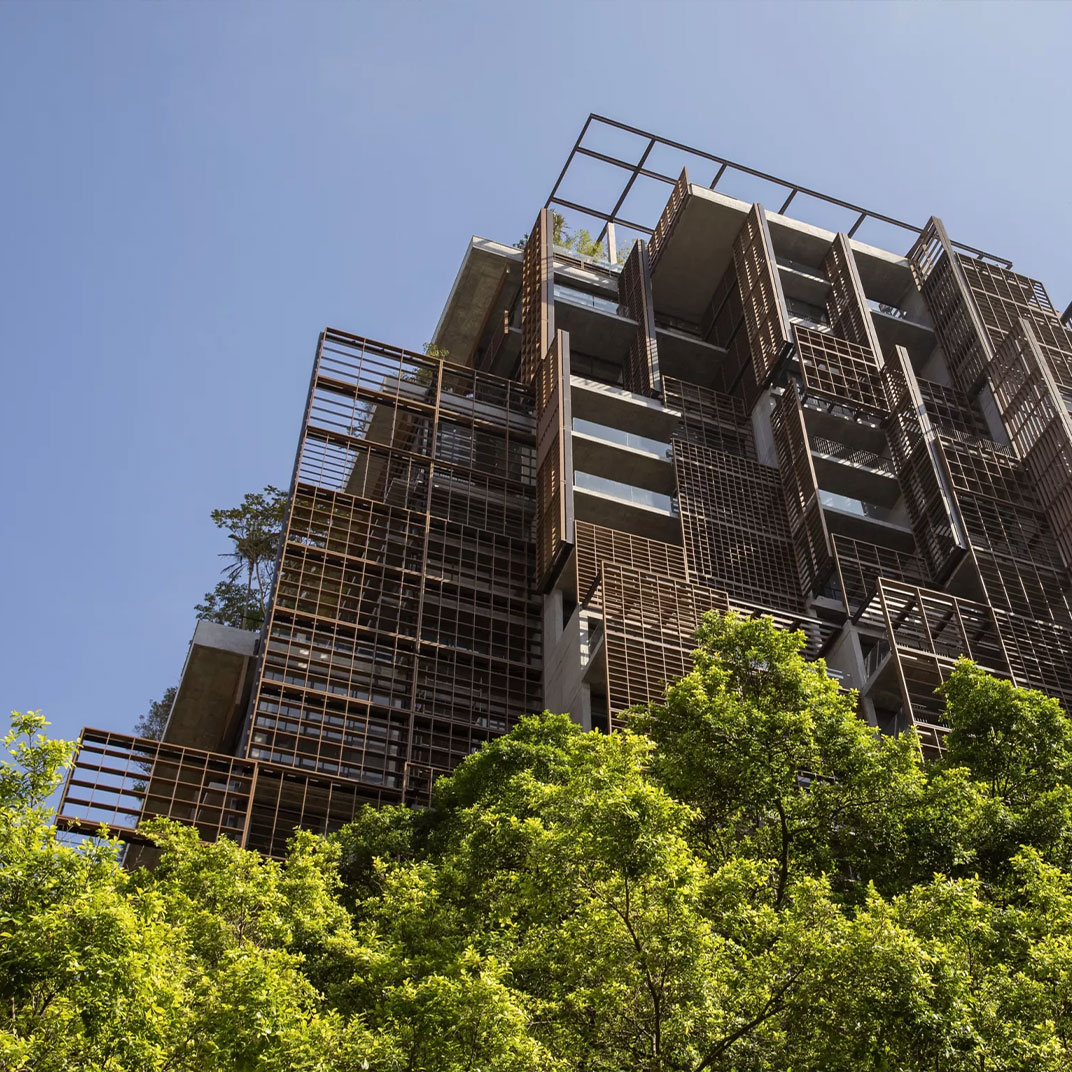
Rosewood São Paulo, Brazil
Who stays here: Urbanites and families in search of an opulent mix of Brazilian tradition and forward-thinking design, within walking distance of São Paulo’s iconic boulevard.
Out of the Cidade Matarazzo development — once a complex of 20th-century heritage buildings and now a vibrant mixed-use lifestyle center — emerges an audacious, 93-meter-tall, 22-story vertical garden tower. Wrapped in wooden lattice and clad with over 10,000 growing trees indigenous to the Mata Atlântica rainforest, the Rosewood tower’s innovative design addresses urban environmental challenges by reintroducing native flora to the metropolitan landscape. Positioned adjacent to a renovated maternity ward, together the two buildings offer 160 guest rooms and over 100 resident suites, two pools and six restaurants.
Rooms and public spaces maintain the brand’s signature “Sense of Place” philosophy, simultaneously commemorating Brazil’s rich past and sustainable future. They feature 100% local materials: wood, marble, custom furnishings and an art collection of 450 original works by 57 Brazilian artists.
Defining features:
- A striking, hand-drawn mural replicating an abstract night sky that tops the Rabo di Galo 1930s-era jazz bar — a feat that required 68 design hours.
- A rooftop infinity pool with skyline views and a ground-level, mosaic-lined pool for families hugged by tropical greenery.
- State-of-the-art spa and fitness center, including a healing chamber lined with mirrors and shelves with over 400 Brazilian sourced clear quartz crystals.
- The Chapel of Santa Luzia, built in 1922 and renovated to include a stained-glass rosette designed by internationally renowned Brazilian artist Vik Muniz.
More hotels by architect Jean Nouvel:

Benesse House, Japan
Who stays here: Art enthusiasts and couples craving a peaceful coastal retreat with private access to an extraordinary collection of modern art and contemporary design.
The revolutionary design concept behind Benesse House was created in 1992 by Tadao Ando, Pritzker Prize winner and among the most celebrated Japanese architects alive. Merging gallery spaces and guest quarters to create an unprecedented museum-hotel hybrid — on Naoshima, one of several islands in Japan’s Inland Sea — are four wings with distinct architectural characteristics, attractions and guest rooms. The minimalist concrete form of "Museum" is partially embedded into the coastal landscape; "Oval" features an open-air reflecting pool encircled by a sun-drenched portico; "Park" — among the rare Ando buildings here to incorporate wood — blurs the line between inside and outside; and "Beach", with sightlines aligned with the sea's surface, creates the impression of a floating structure.
Dominated by minimalism and geometric simplicity, each of the 65 guest rooms spread between the buildings is spacious, defined by elements like understated furnishings and floor-to-ceiling windows that intentionally frame views of the sea, gardens and the distant Shikoku Mountains.
Defining features:
- Immersive layouts that inspire after-hours visits to galleries and installations by artists such as David Hockney, James Turrell, Yayoi Kusama and Andy Warhol.
- Sculpture parks along the seafront and within a nearby forest that form a living museum harmonizing indoor and outdoor spaces.
- Restaurants and spa facilities ensconced in glass, with light and water views, including an outdoor herbal medicine bath in front of the sea.
- Six exclusive rooms in the Oval: perched on a hilltop and accessible by a private monorail above the sea.
Explore more hotels by Tadao Ando:
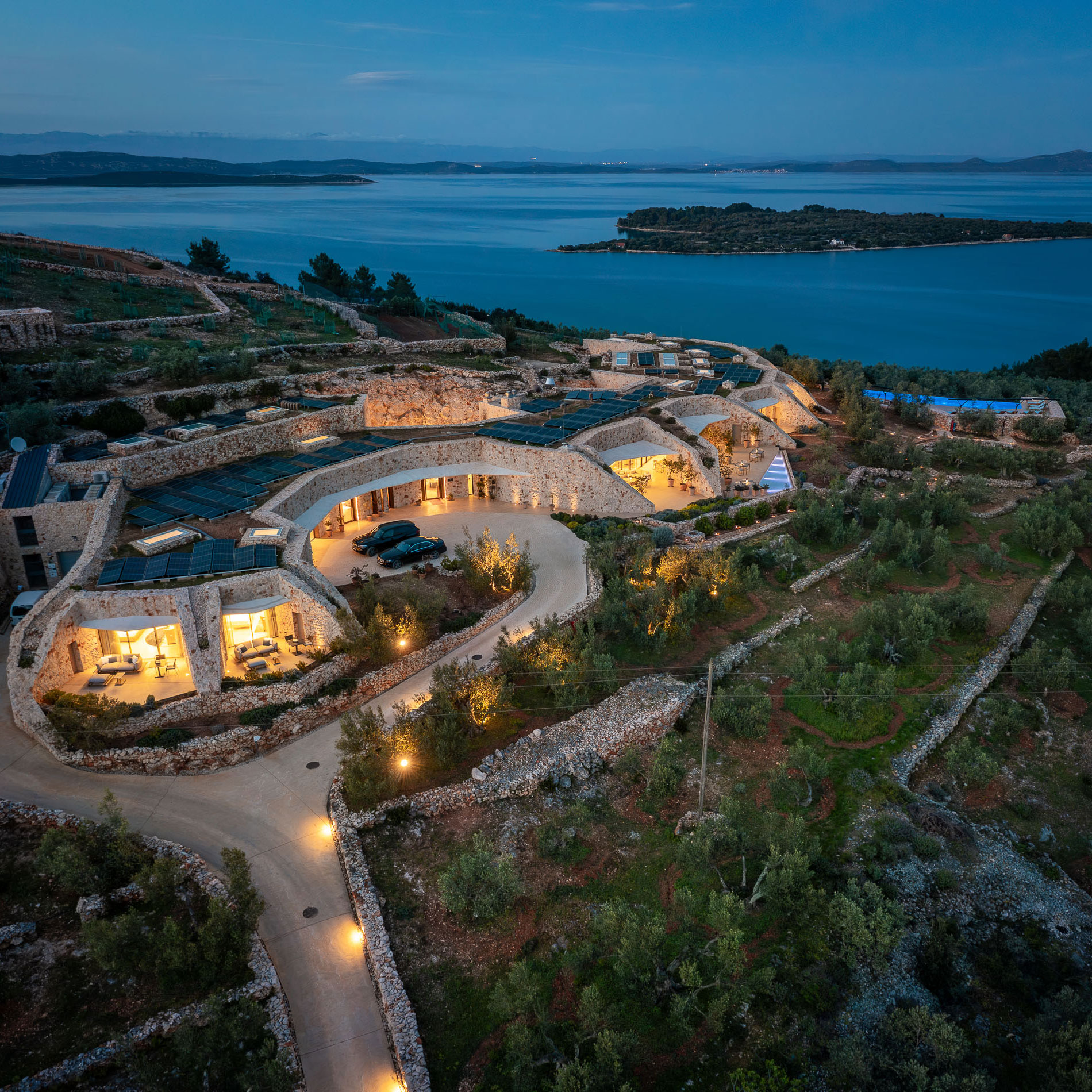
Villa Nai 3.3, Croatia
Who stays here: Couples or solo travelers who value privacy, wellness, nature and culinary adventures in an under-the-radar European island destination.
Located on the Adriatic island of Dugi Otok, the eco-luxury accommodations of Villa Nai 3.3 were carved directly into the hillside. The excavated stone was then used among the building's primary materials, an innovative design choice to limit emissions. Nestled among a 40,000-square-meter olive grove from which an award-winning olive oil is cultivated, traditional Dalmatian building methods inspired the hotel's undulating design, notably dry-stone walling — a technique in which stone is carefully stacked without mortar to create organically molded terraces and walls. The result is an almost undetectable fusion of edifice and environment, nearly invisible within the island’s rugged topography, that encourages guests to disappear into the natural setting.
The building’s interiors are as elegant as their outdoor counterparts: each of its eight guest rooms is enhanced with natural materials — Italian marble, wood finishes and muted hues that complement the hotel's sustainable ethos.
Defining features:
- Five deluxe rooms and three suites with a combination of skylights, standalone tubs and private patios that extend living spaces into their geographical surroundings.
- The lobby's 1.6-meter, bespoke Swords chandelier by Giorgetti.
- An on-site restaurant that highlights the property’s award-winning olive oil, through both its dishes and its glass wall framing the landscape.
- A responsible water system incorporated throughout the property, contributing to purified, desalinated water in bathrooms, a saltwater lap pool and recycled rainwater irrigation.
Explore more hotels by architect Nikola Bašić:
Related Articles:
Hero Image: Shebara Resort, on Saudi Arabia’s Red Sea, camouflaged by the shimmering reflections of the water.










